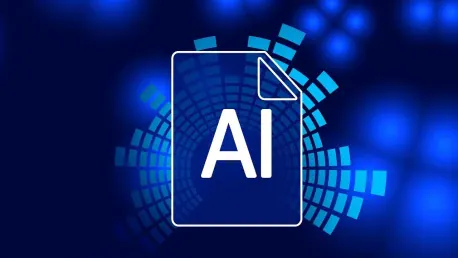In the fast-paced world of software development, efficiency and quality are paramount. Traditional debugging methods, which can consume up to 50% of development time, are increasingly being supplemented or replaced by AI-driven tools. These generative AI tools are revolutionizing the debugging process, offering significant improvements in productivity, code quality, and cost-efficiency. This article explores how AI debugging tools operate, their benefits, and how they can be seamlessly integrated into development workflows.
Understanding Generative AI in Debugging
Generative AI tools leverage extensive datasets and machine learning techniques to identify and predict patterns within code. By examining code syntax, variable usage, function flow, and common error patterns, these tools can autonomously recommend and implement fixes. The more these tools are exposed to diverse coding structures, the more proficient they become in identifying complex bugs.
How Generative AI Operates
Generative AI tools analyze vast amounts of code to learn and predict potential issues. They can detect problems such as infinite loops and suggest break conditions. These tools continuously improve as they process more data, becoming adept at identifying and resolving intricate bugs. This capability allows developers to focus on more creative aspects of coding, enhancing overall productivity.
The mechanisms underpinning generative AI involve the use of neural networks and deep learning algorithms. By training on extensive programming languages and frameworks, these AI systems become skilled at understanding the nuances of different coding styles. When an anomaly is detected in the code, these tools utilize their learned knowledge to propose encapsulated fixes, helping developers overcome challenging bugs swiftly. Moreover, as these AI tools gain more experience, their predictive accuracy and efficiency improve, making debugging processes more streamlined and less time-consuming for developers.
Benefits of AI Debugging Tools
AI-driven debugging tools offer several key benefits, including speed and efficiency, enhanced code quality, cost savings, and reduction in developer burnout. By automating repetitive tasks, these tools free up developers to concentrate on innovation and new feature development. This section delves into each of these benefits in detail.
AI’s speed and efficiency in debugging lie in its ability to thoroughly scan and analyze code quickly. Traditional methods often required multiple iterations and reviews to identify critical bugs, but AI can perform these tasks in a fraction of the time. This acceleration not only hastens the development process but also allows for faster iterations and more frequent updates. Consequently, software products can be kept competitive and up-to-date, meeting the dynamic demands of the market.
Key Benefits of AI Debugging Tools
Speed and Efficiency
AI-driven debugging significantly reduces the time required to detect and fix bugs, expediting release cycles by up to 40%. This acceleration not only speeds up the overall development process but also shortens the time-to-market for software products. Faster debugging means quicker iterations and more frequent updates, keeping software competitive and up-to-date.
By leveraging AI, developers can automate repetitive debugging tasks, which traditionally consumed vast amounts of time and effort. This streamlined approach ensures that more time is allocated to other vital aspects of development, such as implementing new features and improving user experience. Additionally, AI-powered tools provide real-time analysis and suggestions, significantly reducing the back-and-forth typically associated with debugging. This not only optimizes development cycles but also allows teams to address issues quickly, leading to a more efficient and productive workflow.
Enhanced Code Quality
By spotting potential issues early, AI tools help maintain higher code quality, decreasing the likelihood of bugs making it to production. This proactive approach ensures robustness and reliability in the final product. Early detection of bugs also means fewer post-launch issues, leading to a smoother user experience and higher customer satisfaction.
Since AI tools are trained on vast datasets, they can detect patterns and predict future issues, precluding problematic code from becoming part of the final software release. This leads to products that are more stable, secure, and less prone to failure. By fixing bugs before they escalate, AI contributes to a robust software development cycle where quality is maintained consistently. The reliability of the product increases consumer confidence, resulting in better user retention and satisfaction.
Cost Savings
Automating bug fixes diminishes costs related to delayed releases and post-launch corrections. Organizations have reported up to a 30% reduction in debugging expenses following the integration of AI tools. These savings can be redirected towards other critical areas of development, such as feature enhancements and user experience improvements.
The cost efficiency provided by AI tools is substantial, particularly when considering the typical expenses related to extended development times and resource reallocation. By reducing the dependency on human intervention for trivial and repetitive tasks, organizations can allocate their budget more effectively, prioritizing innovation and strategic initiatives. Consequently, development teams can deliver high-quality software within tighter budgets, offering competitive advantages in cost management and product release timelines.
Reduction in Burnout
By automating repetitive debugging tasks, AI allows developers to focus on more creative aspects of coding, such as developing new features. This shift helps in reducing burnout and enhancing overall team morale. A more engaged and motivated development team is likely to produce higher quality work and innovate more effectively.
The implementation of AI in debugging alleviates one of the most monotonous and stress-inducing processes in software development. Developers can transition from continuous bug hunting to more stimulating and rewarding projects, fostering a healthier work environment. By minimizing the repetitive strain associated with traditional debugging, team morale and productivity are significantly enhanced, leading to better collaboration and innovative solutions.
Adoption Across Industries
AI debugging tools are particularly prominent in industries with extensive data sets, such as healthcare, finance, e-commerce, automotive, manufacturing, entertainment, and education. These sectors benefit immensely from higher productivity, cost savings, and reduced error margins that these tools offer. It’s crucial, however, to choose a tool that aligns well with the project’s tech stack and workflows, as one tool may not be universally effective across different project types.
Industry-Specific Benefits
Different industries have unique requirements and challenges that AI debugging tools can address. For instance, in healthcare, ensuring the accuracy and reliability of software is critical for patient safety. In finance, robust and error-free code is essential for secure transactions. This section explores how AI debugging tools cater to the specific needs of various industries.
In the healthcare sector, software accuracy is vital due to its direct impact on patient outcomes. AI debugging tools help identify and address potential software flaws that could otherwise lead to significant errors in patient data management and diagnostics. Similarly, in the financial industry, where security and reliability are paramount, AI aids in maintaining code integrity, ensuring that transactions and sensitive data handling are secure and consistent. These sector-specific benefits underscore the importance of AI’s role in modernizing and safeguarding critical applications across diverse industries.
Choosing the Right Tool
Selecting the appropriate AI debugging tool is crucial for maximizing its benefits. Factors to consider include the project’s tech stack, the complexity of the codebase, and the specific needs of the development team. This section provides guidance on how to evaluate and choose the best tool for different types of projects.
To make an informed choice, it’s essential to evaluate the compatibility of AI tools with existing development environments and workflows. Consideration must be given to language support, integration capabilities with current IDEs, and the overall ease of adoption. Comprehensive testing with a trial version of the tool can shed light on its effectiveness and address any initial concerns. Furthermore, collecting feedback from the development team can provide valuable insights into the tool’s practical benefits and usability within real-world project scopes.
Leading Generative AI Tools for Debugging
GitHub Copilot
GitHub Copilot is a versatile tool suitable for web development, mobile apps, and backend services. It supports languages like JavaScript, Python, TypeScript, Ruby, and Go, and integrates with frameworks such as React, Node.js, and Django. Powered by OpenAI’s Codex, it provides inline suggestions and code snippets based on context, enhancing productivity and code quality.
GitHub Copilot transforms the way developers approach coding by providing real-time code suggestions and autocompletion. This tool not only simplifies the coding process but significantly reduces the time taken to identify and fix errors. The insights provided by Copilot are contextually relevant, ensuring that the suggestions fit seamlessly into the existing codebase. By acting as an intelligent assistant, GitHub Copilot has the potential to elevate the capabilities of both novice and experienced developers, contributing to the production of high-quality code efficiently.
DeepCode (now Snyk Code)
DeepCode focuses on code quality analysis and security vulnerability detection. It supports languages such as Java, JavaScript, Python, and TypeScript, and integrates with CI/CD pipelines. By working with IDEs like IntelliJ IDEA and Visual Studio Code, DeepCode evaluates code for issues and offers real-time solutions based on similar code structures.
DeepCode’s strength lies in its ability to assess code quality rigorously, identifying subtle vulnerabilities and potential security threats that might elude traditional debugging methods. By integrating into CI/CD pipelines, it ensures continuous inspection and real-time feedback, fortifying the security and robustness of applications. The tool’s adaptability and comprehensive analysis make it an indispensable resource for development teams focused on building secure and maintainable software across diverse programming environments.
Tabnine
Tabnine is suitable for web apps, mobile apps, and enterprise software. It supports languages such as JavaScript, Python, Java, and C++, and integrates with VS Code and IntelliJ IDEA. As a productivity tool, Tabnine autocompletes code snippets, identifies syntax errors, and provides personalized debugging support.
Tabnine’s capability to provide intelligent code completions and identify potential syntax errors on the fly enhances coding efficiency and accuracy. Its personalized suggestions adapt to individual coding styles, offering relevant and context-aware recommendations. By incorporating Tabnine into the development workflow, teams can experience a substantial boost in productivity, allowing for quicker iterations and reducing the time spent on resolving minor coding issues. This enables developers to maintain their focus on more complex and innovative aspects of software development.
Conclusion
In the dynamic realm of software development, maximizing efficiency and ensuring high quality are critical. Traditional debugging methods, often consuming up to half of development time, are gradually being augmented or replaced by AI-driven tools. These advanced generative AI tools are transforming the debugging landscape, leading to substantial gains in productivity, code quality, and cost-efficiency. This article delves into the workings of AI debugging tools, their numerous benefits, and the way they can be effortlessly integrated into existing development workflows. By leveraging machine learning and intelligent algorithms, AI debugging tools can swiftly identify and rectify errors, reducing the time and effort developers spend on troubleshooting. AI tools not only improve the accuracy of bug detection but also suggest optimal solutions, enabling developers to focus more on innovation and less on repetitive tasks. The integration of AI in debugging presents a promising future for software development, where top-notch code quality can be achieved in record time, driving overall success.









